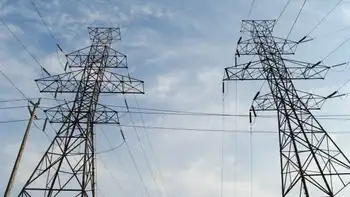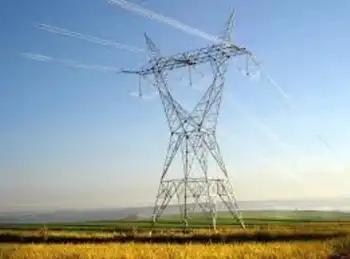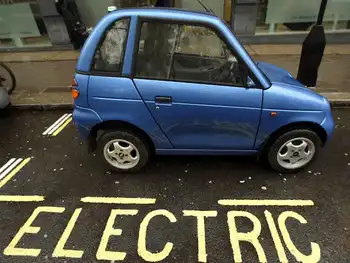Utilities hunker down for tough year ahead
PHOENIX, ARIZONA - If misery loves company, the meeting of the nation's utility executives is a good place to hang out.
A recession, tight credit markets, global warming and higher costs for everything from fuel to wires are the talk in Phoenix at the annual financial conference of the Edison Electric Institute, an industry group. The meeting opened as shares in utilities have plunged.
"The economy has moved to front and center," said Bruce Williamson, chairman, president and chief executive of Houston-based power producer Dynegy.
The government said the nation's gross domestic product fell 0.3 percent in the third quarter, and analysts figure the slowdown will get much steeper in the fourth quarter and into 2009 with the nation at risk of its most serious recession since the early 1980s.
That can mean flat or lower sales for the nation's utilities, which generated about $300 billion a year in revenue and made up about 3 percent of the country's gross domestic product in 2005, according to EEI.
Columbus, Ohio-based American Electric Power, for example, said last month it was seeing a slowdown in demand from its industrial customers and Charlotte, N.C.-based Duke Energy said that it continues to add customers, but they are not using as much electricity as they used to.
Both said they plan on cutting their capital expenditures programs, AEP by $750 million to $2.5 billion in 2009 and Duke $200 million, to take into account the slowdown. Duke also said it is delaying by a year construction of a natural gas plant planned for the Carolinas.
The problem is that the capital-intensive industry can put off work for only so long. Utilities need to be ready when demand resumes for everything from energy-sucking high definition televisions to giant factories and even widespread use of electric vehicles in the future.
Once recessions end, even deep ones, the need for power bounces back fast, said Jim Rogers, Duke Energy's chairman, president and chief executive.
"We looked at the recessions prior to 1980, and what we saw, there was a huge rebound," Rogers told analysts on a conference call. "And so in our planning, we're very sensitive to that, and we want to make sure, since our job is to have affordable, reliable electricity 24-7 that we're planning in a way to deal with that possibility."
Overall, the industry remains financially sound, but credit is much more expensive and difficult to come by, said Richard McMahon, Edison's executive director of finance and energy supply. Also hurting utilities is the fact there are fewer independent banks that would loan money to utilities because of the financial meltdown.
To help get through the credit crunch, many utilities have been hoarding cash and calling in credit lines.
Baltimore-based Constellation Energy Group Inc., the nation's largest power wholesaler, agreed to be bought by a unit of Warren Buffett's Berkshire Hathaway Inc. after liquidity and accounting issues sent its stock south.
"You really need to be nimble in this market," McMahon said.
Utilities will need access to lots of cash — at least a $1 trillion — over the next couple of decades to help finance new sources of power generation including wind and solar, transmission systems to get the electricity to people's homes, energy efficiencies and new technology that include smart meters to help homeowners control electric usage.
McMahon said meeting future demand will require a diverse energy mix, including nuclear power and continued reliance on coal that generates half of the nation's electricity, to meet rising demand.
And then there is the matter of climate change and what an Obama administration may seek to do to limit greenhouse gas emissions from power plants as part of the U.S. plan to address global warming.
All of this comes as rates for consumers continue to rise. The Energy Department is forecasting rates to rise 5.2 percent for 2008 and 9.9 percent in 2009. That is on top of increases of 24 percent since 2003.
AEP has asked to raise rates 45 percent for Ohio customers over the next three years and the Tennessee Valley Authority has raised electricity rates 20 percent, its largest increase in 30 years.
Williamson said any plans needs to take into account what limits will do to the struggling economy and consumers, who likely would get stuck with the bill in the form of higher rates.
"If we put in place a climate or carbon program, it's going to impact the price of everything," he said.
Related News

Ontario Reducing Burden on Industrial Electricity Ratepayers
TORONTO - Ontario's government is pursuing burden reduction measures for industrial electricity ratepayers to help businesses compete, and stimulate growth and investment.
Over the next year, Ontario will help industrial electricity ratepayers focus on their businesses instead of their electricity management practices by establishing an energy concierge service to provide businesses with better customer service and easier access to information about electricity pricing and connection processes.
Ontario is also tasking the Independent Electricity System Operator (IESO) to review and report back on its billing, settlement and customer service processes. This includes identifying opportunities to:
Improve and simplify industrial electricity bills;
Review how the monthly…




